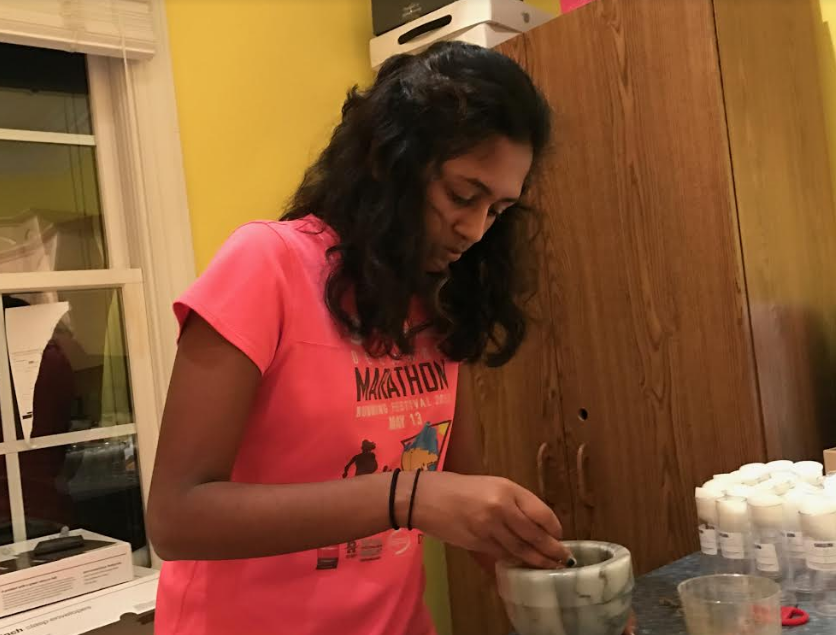Science Fair encourages active learning
Sophomore Asha Maran works on her Science Fair project studying flowers as pesticides against fruit flies.
January 27, 2017
It was that time of year again as students in all honors and Advancement Placement science classes prepared for Wednesday night’s Science Fair. Each year, the entire science department requires all students in advanced courses to conduct an independent research project at the start of the school year. Students are expected to present their findings complete with a research plan, backboard and oral presentation to their science class in mid-January. Students also had the option of doing Toshiba/ NSTA Exploravision or Shark Tank, two other independent research projects.
On the night of Science Fair, students are judged by two or three experts in the scientific field.
In each science category, depending on the number of projects, judges awarded a first, second and third place winner. Each FCPS school can only send 20 students to compete at the regional event; therefore, not all first place winners are eligible to compete at the Fairfax County Regional Science and Engineering Fair.
Science Fair gives students the opportunity to explore over 22 different scientific fields from cellular and molecular biology to mathematical sciences, encouraging them to choose a problem that sparks their interest.
“I [conducted an experiment that] measured the glucose levels in bananas at different points in the ripening process and [observed] at which point were the bananas the healthiest for someone with diabetes,” sophomore Zoe Hutcheson said.
The purpose of Science Fair is for students to investigate and formulate solutions and to educate students on pertinent global issues. It encourages students to interactively expand their comprehension about the science world and learn in-depth about multiple scientific and mathematical concepts, using skills which they can apply in the future.
“Science Fair is an opportunity for the students to do something that interests them and [their project] should be something that they are questioning, [whether] they read about it in an article or saw it on the news,” science teacher Rebecca Smith said. “[They should be] able to transform that idea, thought or question into an entire project to figure out why things happen in our everyday world.”
Students were given ample time to complete their independent projects. However, in the process of conducting their experiments, students faced obstacles that they solved in order to obtain qualitative and quantitative data and went above and beyond the standard expectations.
“I [tested the effect of] chromatography on candy dyes and their RF factors,” sophomore Joshua Rice said. “It was very difficult [to conduct the experiment], but being in honors [chemistry], I knew I had to push myself, so it was definitely [worth it].”
Certain projects require specialized equipment, so experiments could only be conducted in a regulated institution or laboratory. Therefore, it was the responsibility of the student to make arrangements and acquire all of the necessary tools to successfully complete the experiment.
Science Fair offered students the experience and understanding necessary to explore further careers in the STEM fields in college and beyond. One day, some of these students will join the next generation of innovators and scientists, contributing valuable knowledge to the scientific world.


